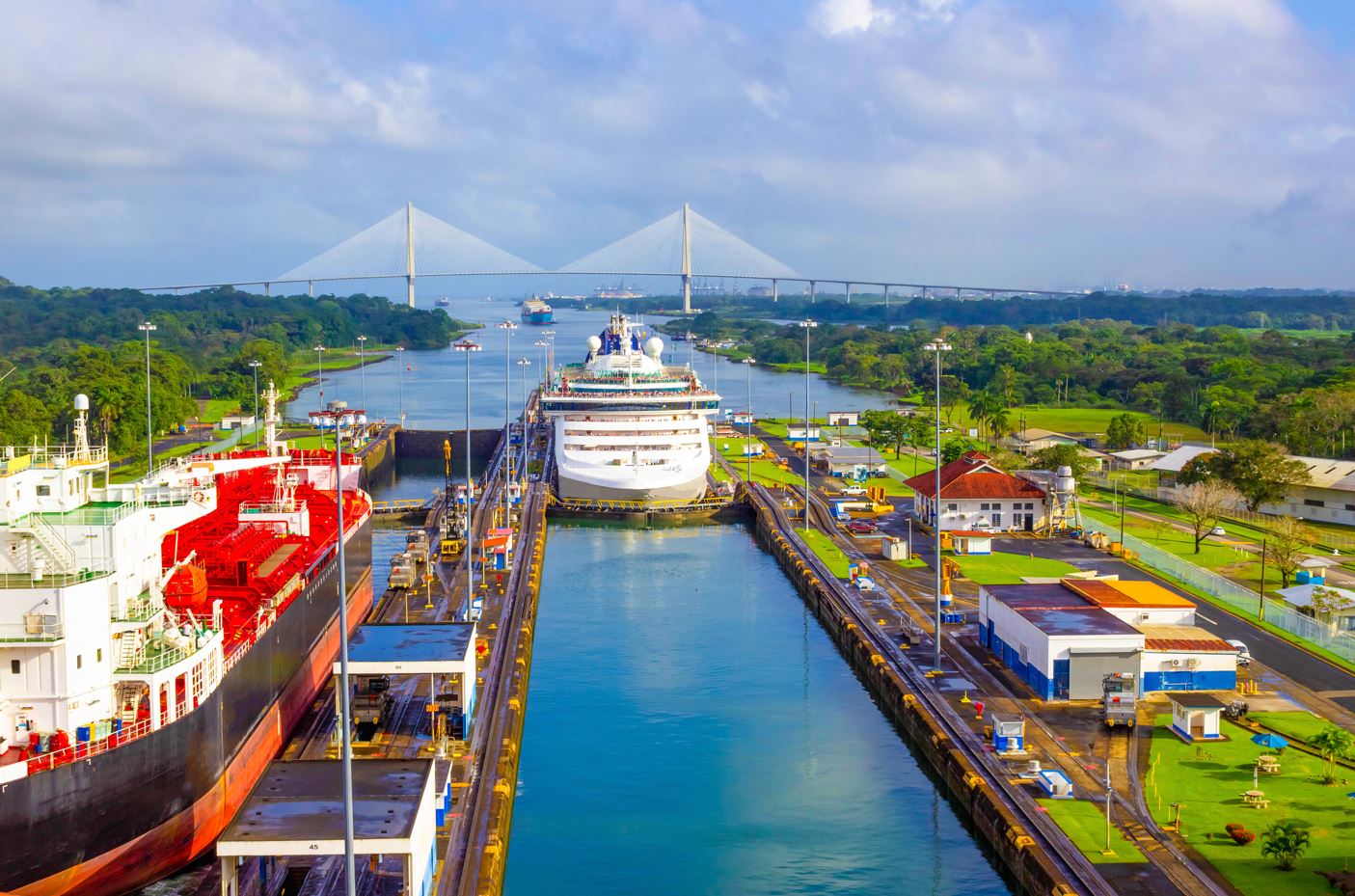Dr Jake Monk discusses severe drought at one of the world’s most important waterways which is causing major disruption for shipping companies.
While the attacks on shipping approaching the Suez Canal continue and the geopolitics of the region seem to get more complicated by the day, a longer-standing threat to world trade is still an issue on the other side of the world.
March 2021 witnessed an otherwise anonymous, although impressive by its size and sophistication, container ship the Ever Given gaining worldwide celebrity after it became (in)famous for blocking the Suez Canal for almost a week. More recent events have again thrown the spotlight back on this vital trade route with many shipping companies taking the expensive and time-consuming decision to route their vessels around the Cape of Good Hope on Africa’s southern coast. While the situation in the Red Sea is still playing out another potential supply chain crisis is unfolding on the Pacific’s eastern edge.
Opened in August 1914 the Panama Canal has been a vital trade route ever since. An impending calamity in the Panama Canal has been an issue since 2015 when the canal’s water supply was hit with the worst drought in over one hundred years, a drought that some described as ‘brutal’. The rain fall that is vital for the canal’s operation has been unreliable since then, with the more frequently occurring El Niño weather phenomenon being blamed for this disruption. The canal depends on the operation of three major locks to allow the safe passage of an average of 38 ships a day to transit the fifty-mile route, a number that is due to drop to as low as 14 per day as the water supply has become depleted. To give a sense of the issue here each time a lock is used some 200,000,000 litres of water is required, with only 60% of that being retained for further use.
The result has been major disruption for shipping companies with traffic jams building up at both the Pacific and Caribbean access points. To get priority passage firms have been bidding up to $4million to jump the queue, a cost to be passed on at some point to the final customer. The alternative has been similar to the Suez with ships this time being sent around the treacherous Cape Horn, adding approximately 8,000 nautical miles and again much expense. Like the Suez this also means a knock-on effect of the ships taking longer to make port and thereby being less available for other cargoes, effectively causing a shortfall in capacity and again increasing costs.
A solution might be the completion of a 300km rail and road route across southern Mexico, or the revived possibility of a new canal across Nicaragua. The prospect of Panama building a new reservoir on the Indio River to feed their canal looks unlikely to go ahead any time soon in the face of fierce local opposition. The real solution would be a return to reliable rainfall patterns, at this point that looks as difficult to predict as the geopolitics elsewhere in the world.
Dr Jake Monk-Kydd is a Senior Lecturer in the Christ Church Business School.
 Expert comment
Expert comment Emma Grafton-Williams
Emma Grafton-Williams 2028
2028


